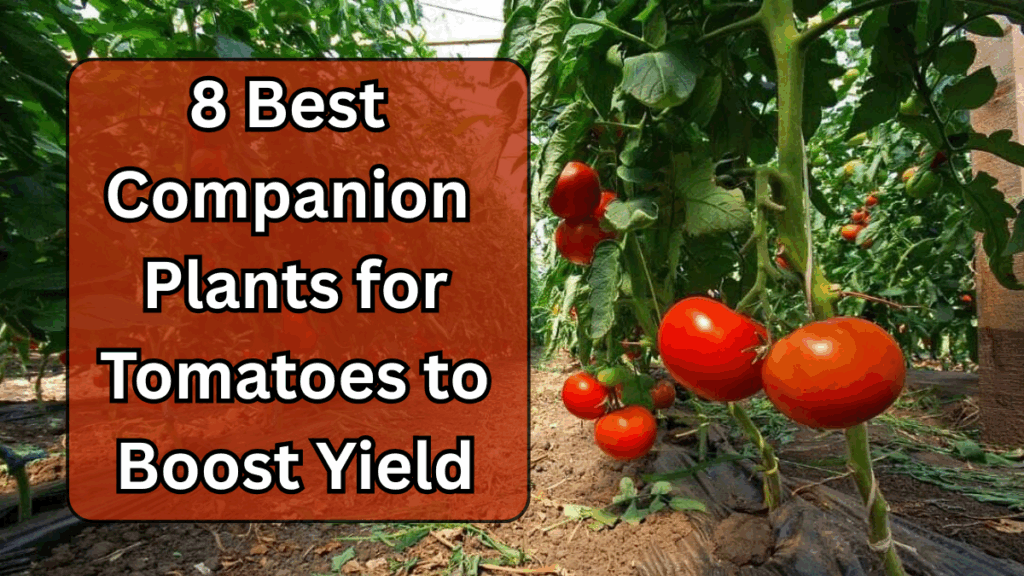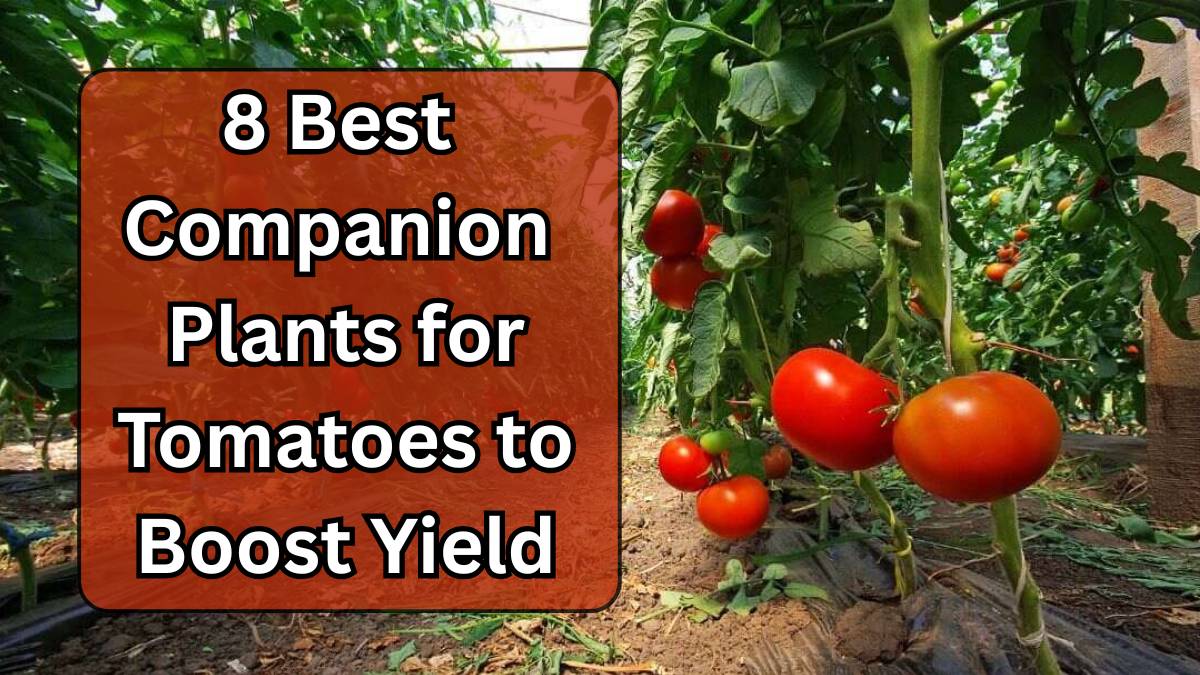Tomatoes are a staple in many gardens, but did you know the secret to bigger, healthier, and more productive plants often lies in what you plant alongside them? Tomato companion plants can improve tomato growth, deter pests, and even enrich the soil naturally. Let’s explore the top 8 companion plants for your tomato garden.

Why Companion Planting Matters for Tomatoes
Before diving into the list, here’s why tomato companion plants are so valuable:
-
Boost Tomato Growth: Certain plants release nutrients into the soil or create favorable microclimates.
-
Pest Control: Some companions repel harmful insects naturally.
-
Improve Flavor: The right neighbors can enhance tomato taste.
-
Efficient Space Usage: Companion planting allows you to grow more in less space.
1. Basil
Benefits for Tomatoes
-
Enhances tomato flavor
-
Repels tomato hornworms, aphids, and mosquitoes
-
Improves growth by stimulating essential oils
Planting Tips
-
Plant basil close to tomato stems
-
Harvest leaves regularly to encourage bushier growth
2. Marigold
Benefits for Tomatoes
-
Deters nematodes and other harmful insects
-
Attracts pollinators
-
Adds vibrant color to your garden
Planting Tips
-
Use French or African marigolds around tomato beds
-
Can be interplanted or grown in borders
3. Garlic
Benefits for Tomatoes
-
Repels spider mites and aphids
-
Boosts tomato growth through natural pest control
-
Improves soil health with its sulfur compounds
Planting Tips
-
Space garlic cloves around tomato plants
-
Avoid planting too close to allow air circulation
4. Carrots
Benefits for Tomatoes
-
Loosens soil as they grow, improving root development
-
Makes efficient use of vertical space
-
Can improve tomato growth indirectly
Planting Tips
-
Plant carrots near tomato roots but not too close to disturb them
-
Interplant with shorter tomato varieties
5. Nasturtium
Benefits for Tomatoes
-
Acts as a trap crop for aphids and whiteflies
-
Repels beetles and other pests
-
Adds edible flowers to your garden
Planting Tips
-
Plant around the perimeter or between tomatoes
-
Let it trail naturally—it also helps with ground cover
6. Chives
Benefits for Tomatoes
-
Repels aphids, Japanese beetles, and carrot flies
-
Can enhance tomato growth and flavor
-
Easy to grow in pots or garden beds
Planting Tips
-
Plant in clumps near the base of tomato plants
-
Harvest regularly to encourage new growth
7. Borage
Benefits for Tomatoes
-
Attracts pollinators like bees
-
Improves tomato growth by enriching the soil
-
Helps deter tomato hornworms
Planting Tips
-
Grow near tomato plants but allow space for its large leaves
-
Borage leaves can also be used as mulch
8. Spinach
Benefits for Tomatoes
-
Acts as a living mulch, retaining soil moisture
-
Reduces weeds around tomato plants
-
Can benefit tomato growth by keeping roots cool
Planting Tips
-
Plant in shaded areas created by taller tomato plants
-
Harvest leaves continuously for best results
Vertical Table: Quick Reference of Companion Plants
| Companion Plant | Benefits | Planting Tips |
|---|---|---|
| Basil | Repels pests, enhances flavor, boosts growth | Plant near stems, harvest leaves regularly |
| Marigold | Repels nematodes, attracts pollinators | Border or interplant in beds |
| Garlic | Repels mites and aphids, improves soil | Space cloves around plants |
| Carrots | Loosens soil, improves root growth | Interplant, keep distance from stems |
| Nasturtium | Trap crop for pests, edible flowers | Plant around perimeter, let it trail |
| Chives | Repels aphids and beetles | Plant in clumps, harvest regularly |
| Borage | Attracts pollinators, soil enrichment | Leave space for leaves, can use as mulch |
| Spinach | Living mulch, reduces weeds | Plant in shaded areas, harvest continuously |
Tips for Effective Companion Planting with Tomatoes
-
Rotate companion plants each season to avoid soil depletion
-
Avoid planting tomatoes with crops like corn or potatoes, which can attract shared pests
-
Use a mix of flowering and herbaceous plants to maximize pest control and pollination
-
Maintain proper spacing for airflow to reduce fungal diseases
FAQs
Q1: Can tomato companion plants actually increase yield?
Yes! Certain companions like basil, borage, and marigold improve tomato growth, enhance flavor, and protect plants from pests, leading to better yield.
Q2: Are there any plants I should avoid planting near tomatoes?
Yes. Avoid planting corn, potatoes, and fennel near tomatoes as they compete for nutrients or attract similar pests.
Q3: How many companion plants should I plant per tomato plant?
It depends on the plant size. Generally, 1–2 herbs or flowers per tomato plant works well without overcrowding.
Q4: Can companion plants reduce the need for chemical pesticides?
Absolutely. Plants like garlic, marigold, and nasturtium act as natural pest deterrents, reducing reliance on chemicals.
Click here to learn more
